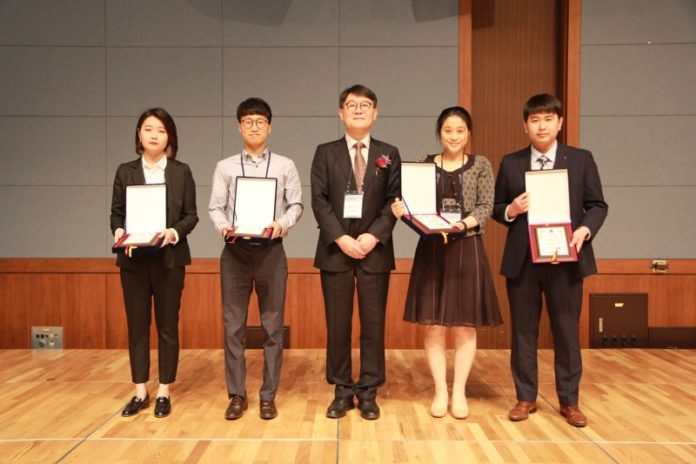A student, affiliated with UNIST has developed a reapplication of fly ash in construction materials industry. The student named DongHo Jeon (Advisor: Professor JaeEun Oh) in the School of Urban and Environmental Engineering at UNIST has developed a binder from coal fly ash with added activating agents.
For his work, he is awarded the Excellent Presentation Award at the 2018 annual spring symposium of Korea Concrete Institute, which was held in Changwon Exhibition Convention Center from May 2 to 4, 2018.
The binder that he has demonstrated, is actually cementless and environmentally-friendly.
Fly ash, also known as pulverized fuel ash, is produced as a byproduct in huge amounts from pulverized coal-fired power plants. Every year, around 750 million tons of fly ash are produced all through the world, and hence there has been an expectation on the reusing and reapplication of fly ash. Be that as it may, the issue is its lower reactivity. Fly ash and calcium hydroxide acquire quality through a pozzolanic reaction, which takes a long time to create strength because of their low reactivity.
The new binder has enhanced this reactivity issue with sugar. The scientists found that fly ash and calcium hydroxide effectively react when included with sugar at high temperature curing conditions, bringing about more elevated amounts of quality creating substances. Calcium complexation impact of sugar dissolved more calcium hydroxide in the binding material, prompting increment of pH, which prompted a dynamic response of fly fiery remains.
It was affirmed that the coupling material can create 40~50 MPa high quality in multi-day of curing. Considering that the concrete utilized for a building usually requires compressive quality of 20~30 MPa in view of 28 days curing, it is a surprising level in both the speed and quality of the quality improvement.
DongHo Jeon said, “The Portland cement, which is the most commonly used construction material in the world, produces a large amount of carbon dioxide in the manufacturing process. The development of cement-based binders using fly ash, which is an industrial byproduct, It is a way to reduce the landfill space and costs that have been used to treat existing industrial by-products.”
“The new binders is also 80% cheaper than the existing portland cement, so we can expect to commercialize them. The development of cementless binders that can produce concrete without using existing portland cement, It is very important from a social point of view.”
The results are reported in Construction and Building Materials.
